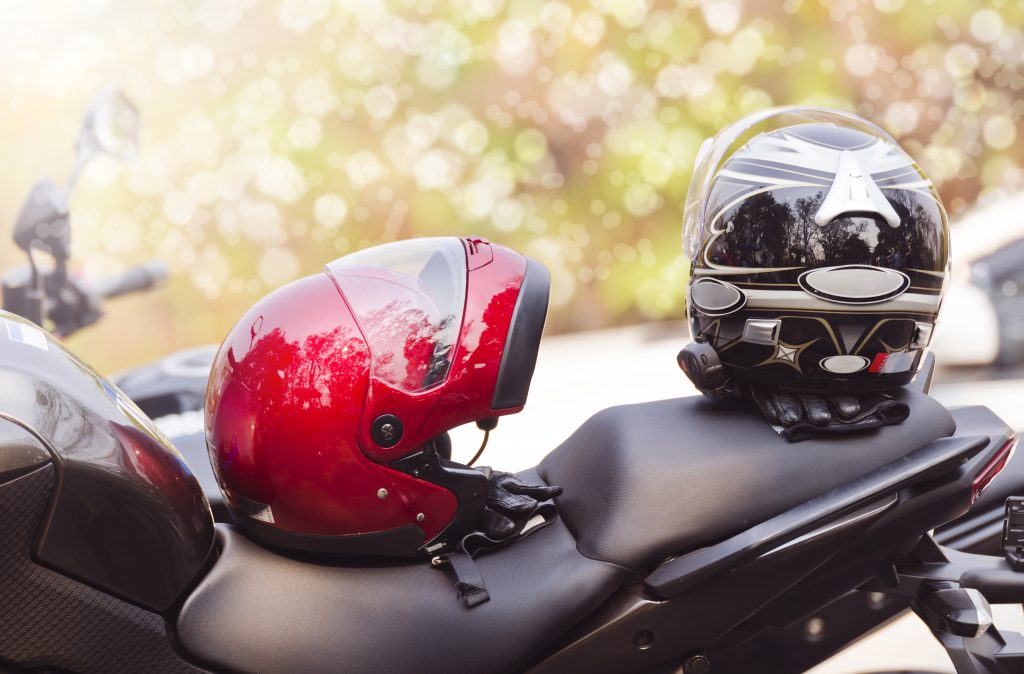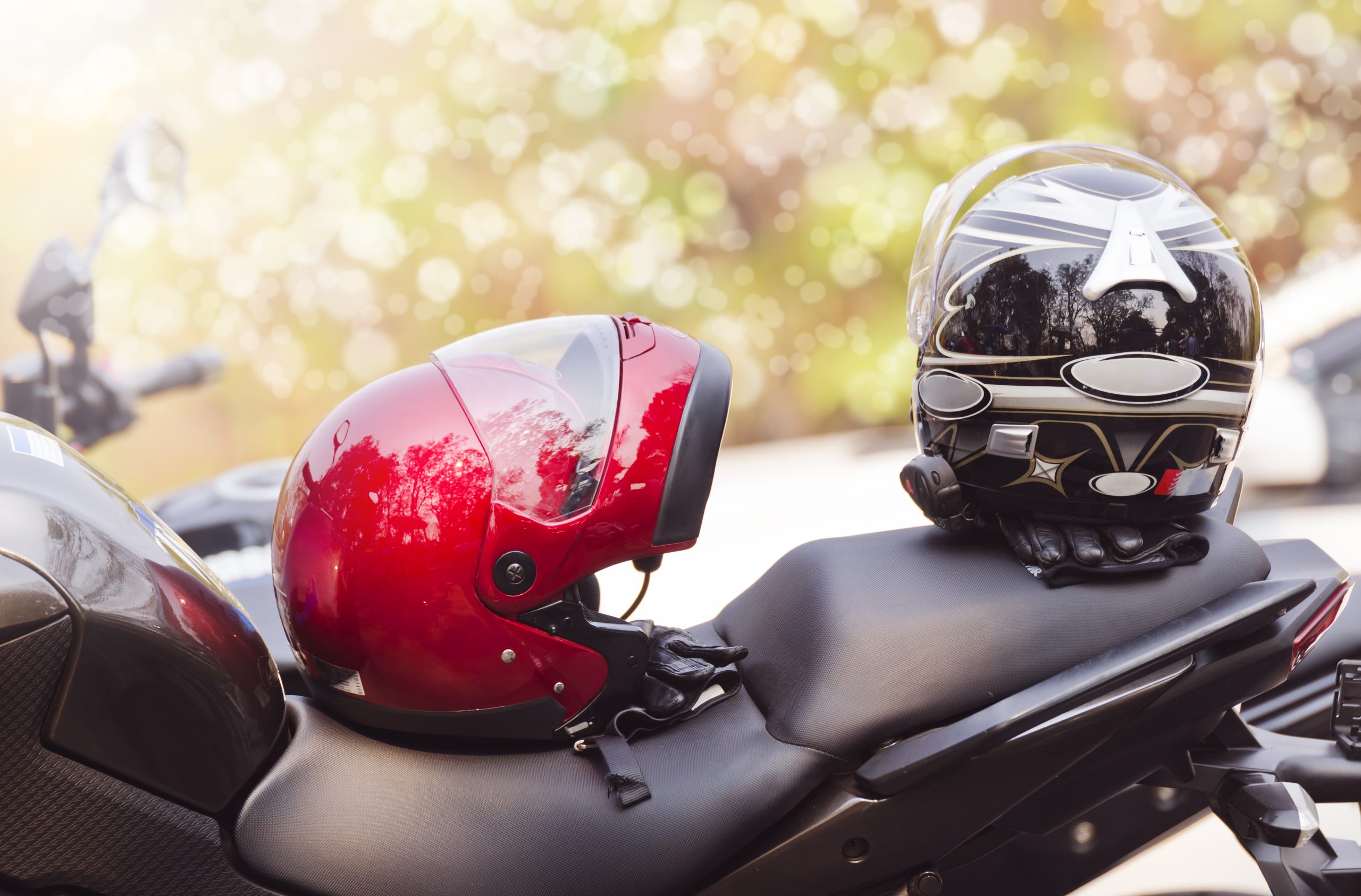If you drive a motorcycle, or even if you ride one as a passenger, the State of California requires you to wear a DOT-certified helmet. This requirement applies to everyone, no matter how old they are or how long they have driven a motorcycle. Considering the high risk of death or serious injury after a motorcycle accident, it is no surprise that California takes this requirement seriously. Failure to comply can result in a fine. Of course, at TorkLaw, we also believe that preventing injuries is an important part of being responsible. Let us look at what the DOT standards are and how to tell if a helmet is compliant.

What are the DOT standards?
In short, the DOT standards are the minimum requirements for motorcycle helmets sold as protective equipment in the United States. Called the FMV-218 rules, these standards are intended to ensure that a helmet provides significant head protection in the event of an accident.
The helmet must provide impact protection
In layman’s terms, impact protection distributes the force with which a rider’s head hits an object. That object could be asphalt, a curb, railing, or anything else the rider’s body runs into. DOT tests require the manufacturer to demonstrate a minimal level of impact resistance.
The helmet must protect the head from sharp objects that can penetrate it.
This means that the helmet needs to stop items from getting into the brain. To put this in concrete terms, let us assume that a motorcycle rider runs into a spiked fence. A DOT-certified helmet should be able to stop that spike from causing brain damage. Again, standards require the helmet to survive a given amount of force.
The helmet must have effective retention straps
Basically, this means the straps must be strong enough to not come off easily. This is measured by establishing if the straps will stretch beyond an inch under accident-like conditions and if all the clips or buckles stay in place. Otherwise, the helmet could fly off when it is needed, rather than protecting the user’s head.
The helmet must provide adequate visibility and not catch on things easily
Adequate visibility means that a helmet with a visor must provide 105⁰ of visibility from the centerline. This is more peripheral vision than most people can use, meaning that the helmet will not create a blind spot for the driver. To ensure that the helmet does not catch on things, DOT prescribes a limit for how far items such as rivets can rise from the helmet surface.

Knowing if a helmet meets the standards
To help consumers know that a helmet is compliant, the DOT and the NHTSA require certain labeling. They also have provided some tips to help consumers confirm that a helmet provides adequate protection.
Labeling
Your first line of defense as a consumer is the required labeling. On the back of each helmet, there should be a sticker that indicates: manufacturer, model name, “DOT FMV-218 compliant.” In addition, regulations require more labels on the inside of the helmet. These must indicate the month and year of manufacture and what the helmet is constructed of. Labels are also required to indicate the manufacturer, model name, size, and owner’s name. This way, you can be sure that the inside and outside make and model information matches. Name and size are mostly a convenience feature.
Physical properties
The NHTSA also gives us other clues to ensure a helmet is safe to wear. Most noticeable is the thickness and weight of the helmet. DOT-approved helmets generally weigh around 3 pounds and have a thick liner under the shell. In addition, novelty helmets tend not to have a visor. If a helmet feels flimsy or has thick items protruding from the shell, it probably is not compliant.
If you are in an accident
One of the unfortunate realities of riding a motorcycle is that even the most careful drivers can get into an accident. Sometimes other drivers create unsafe conditions, and in other situations, the roads are to blame. Either way, having a DOT-compliant helmet can help save you from serious injury or death. Should you be injured in an accident, we recommend the following:
- If another vehicle is involved, always get a police report. This will help establish who was involved and who might be at fault.
- For anything beyond a minor fender-bender, get yourself checked out by a doctor. Whiplash and head injuries are not always obvious immediately.
- Keep your helmet. This can be used to document the nature of your injuries. Helmets can also be tested for defects and other potential liability issues.
- Get witness information
- Take pictures if possible. If you are unable to do so, a lawyer can try to obtain photos taken by crash investigators or bystanders.

Helmet manufacturers may be liable
Although there is always the possibility of suing an at-fault driver, product liability claims can also result from motorcycle accidents. This is especially true in the case of equipment failures. For motorcycle helmets, the following issues may arise:
- Noncompliance with DOT standards. Even if your helmet was properly labeled, there are manufacturers who mislabel their helmets.
- Defective helmets. Even the best manufacturers can make a less-than-perfect helmet occasionally. If your helmet fails as a result of defects, the manufacturer may have to pay damages.
- Other product issues. Sometimes a helmet is DOT compliant but still suffers from design issues, such as straps that will not release at rescue time. These problems can cause injuries, and you can be compensated.
Insurance does not always compensate adequately
Besides product liability issues, many people who are injured in motorcycle accidents do not get fairly compensated by insurance companies. By their nature, insurance companies pay as little for each claim as possible. So, whether you need to cover significant medical expenses or replace lost wages, you should talk to an attorney. At TorkLaw, we specialize in representing honest citizen against big business. Our lawyers will fight to get every dollar you deserve. Call us today at 888-845-9696 for a free consultation.



